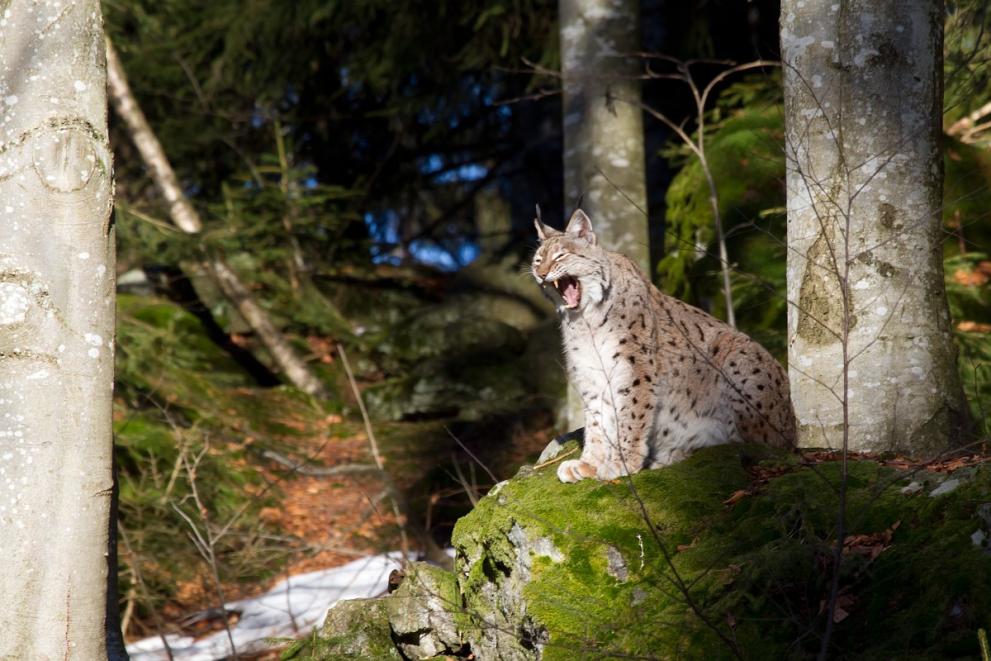
Implementation: 2017-2024
Member State: Slovenia, Croatia, Italy, Romania, Slovakia
Contact: Slovenia Forest Service, rok [dot] cerne zgs [dot] si (Rok Černe)
zgs [dot] si (Rok Černe)
More information: LIFELYNX
Target species: Eurasian lynx (Lynx lynx)
Introduction:
The Dinaric-SE Alpine lynx population went extinct at the beginning of 20th century due to hunting and persecution, habitat loss and lack of prey species. It was successfully reintroduced in the 1973 by translocating animals from a Carpathian source to Slovenia. The animals then spread towards the south-east to Croatia and Bosnia and Herzegovina, as well as to Italy in the west and Austria in the north. Unfortunately, after a few decades, the population started declining again, mainly due to genetic deterioration. To save the population from another extinction and to preserve it in the long term, the LIFE Lynx project started in 2017. Eleven partners from five European countries (Slovenia, Croatia, Italy, Romania and Slovakia), coordinated by Slovenia Forest Service, joined forces with aim of introducing additional, healthy animals from another population. In seven years of the project, at least 14 lynxes will be translocated from Romania and Slovakia to Slovenia and Croatia.
Key actions include:
- Translocation of lynxes from Romania and Slovakia to Slovenia and Croatia;
- Development of a transboundary level lynx conservation management;
- Work closely with core stakeholders, especially hunters;
- Development of science-based management tools for strategic planning and decision-support tools;
- Improving population connectivity for lynx through increasing the chances of natural gene flow by creating a population “stepping stone” in the Alpine area of Slovenia;
Results:
Up until May 2021, thirteen lynxes have been released into the wild; four in Croatia and nine in Slovenia. The first released lynx in Slovenia (in 2019), Goru, already had at least two litters of offspring with the domestic female lynx Teja. Moreover, two lynx released in 2021 in the SE Alps, Aida and Zois, had a litter about three months after the release. This is an important step towards improving population connectivity and with this a long-term lynx conservation. The project is closely monitoring the progress of translocations with telemetry GPS/GSM collars that all translocated lynxes are wearing, photo-traps, and genetic monitoring. An important stream of the project has been involving stakeholders in the work. Active collaboration with local hunters, the project’s key stakeholders, was established in monitoring with photo-traps. Special platforms for communicating with local people, called Local consultative groups, have been launched in five areas in Slovenia and two in Croatia. To educate schoolchildren on the topic of lynx conservation, a special program Young Lynx Guardians was developed.
Financing:
The project has a total budget of 6,829,377.00 € and is financed by the EU LIFE program (4,081,404.00 €) and other co-financers (The Ministry of the Environment and Spatial Planning of the Republic of Slovenia, The Environmental Protection and Energy Efficiency Fund, Euronatur, Government Office for Cooperation with NGOs, The Ministry of the Environment of the Slovak Republic, and WWF).
Sources
Details
- Publication date
- 7 November 2023
- Author
- Directorate-General for Environment

